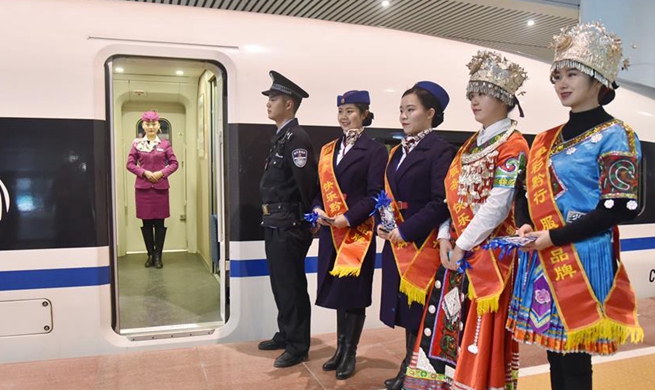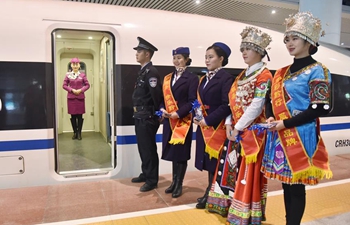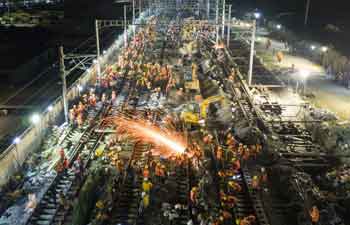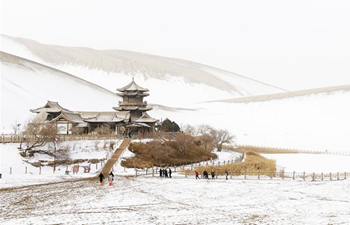BEIJING, Jan. 25 (Xinhua) -- Archaeological findings have revealed Xiongan, a newly established economic zone, as an area with around 7,000 years of human history.
Xiongan, about 100 km southwest of Beijing, is the third of its kind nationally after Shenzhen Special Economic Zone and Shanghai Pudong New Area. It is expected to relieve pressure on Beijing resulting from non-capital functions, to explore a new paradigm of development in densely-populated areas and to renovate the urban layout in the Beijing-Tianjin-Hebei region.
The Cultural Relics Institute in Hebei Province on Sunday released an overview of archaeological findings in Xiongan in 2017, with 263 cultural relics found, including a large number of colored and black pottery, and ancient sites discovered, stretching from the Neolithic Age to the Ming (1368-1644) and Qing (1644-1912) dynasties.
A group of architectural relics around the Nanyang relics site, an important site of the Yan state in the Zhou Dynasty (1046 B.C.-256 A.D.), were also found.
There was also an underground tunnel discovered, which was dug along the border between the Northern Song Dynasty (960-1127) and the Liao Dynasty (907-1125). Its structure and function are so sophisticated that many scholars call it "the underground Great Wall."
Many fortress city sites from the Yuan (1271-1368), Ming and Qing dynasties were found in the area, during which Beijing served as the capital.
"The work we have done so far are deep-level archaeological surveys. Hopefully, they can serve as a preliminary evaluation of cultural heritage in Xiongan and provide reference to the general urban planning," said Mao Baozhong, deputy director of the Cultural Relics Institute in Hebei Province.

















